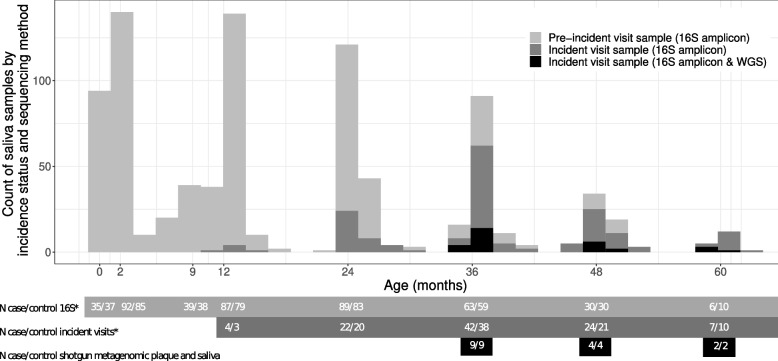Fig. 1.
Histogram of available samples in this incidence-density case-control sample of 189 children from Appalachia. Children were followed from birth until 60 months of age, attending regularly scheduled study visits at birth (Pennsylvania children only), ~ 2 months, 1st-tooth emergence (Pennsylvania children only, average 9 months of age), ~ 12 months, ~ 24 months, ~ 36 months, ~ 48 months and ~ 60 months of age. Children who were diagnosed with white spots or enamel lesions were selected as cases. For each visit at which cases were diagnosed (incident-visit, dark-grey histogram), a similar number of controls were selected from the group of children free of white spots and enamel lesions at that time. Children could be selected as a control more than once or as a case and a control. In our sample, 1 child was selected as a control at both the 36- and 60-month visit, and 1 child was selected as a control at the 36-month visit and a case at the 60-month visit. The number of diagnosed cases/matched control children at each visit is shown in the dark-grey box and double counts these twice-sampled children at lines denoted with asterisk (*). All the available saliva samples from the incident-visit and all preceding visits for cases and selected controls were sequenced for the V4 region of the 16S rRNA gene (light-grey box and light-grey histogram). For a subsample of 15 children diagnosed with enamel lesions at or after the 36-month visit and their 15 matched controls both saliva and plaque samples from the visit of diagnosis/matching were shotgun metagenomic sequenced (black box and black histogram)

